Fresh blackberries and raspberries are such a delight! Have you ever stumbled upon a thicket of wild berries laden with hundreds of ripe, juicy fruit? It's like finding paradise. You don't have to wait for the random discovery of wild fruit, though.
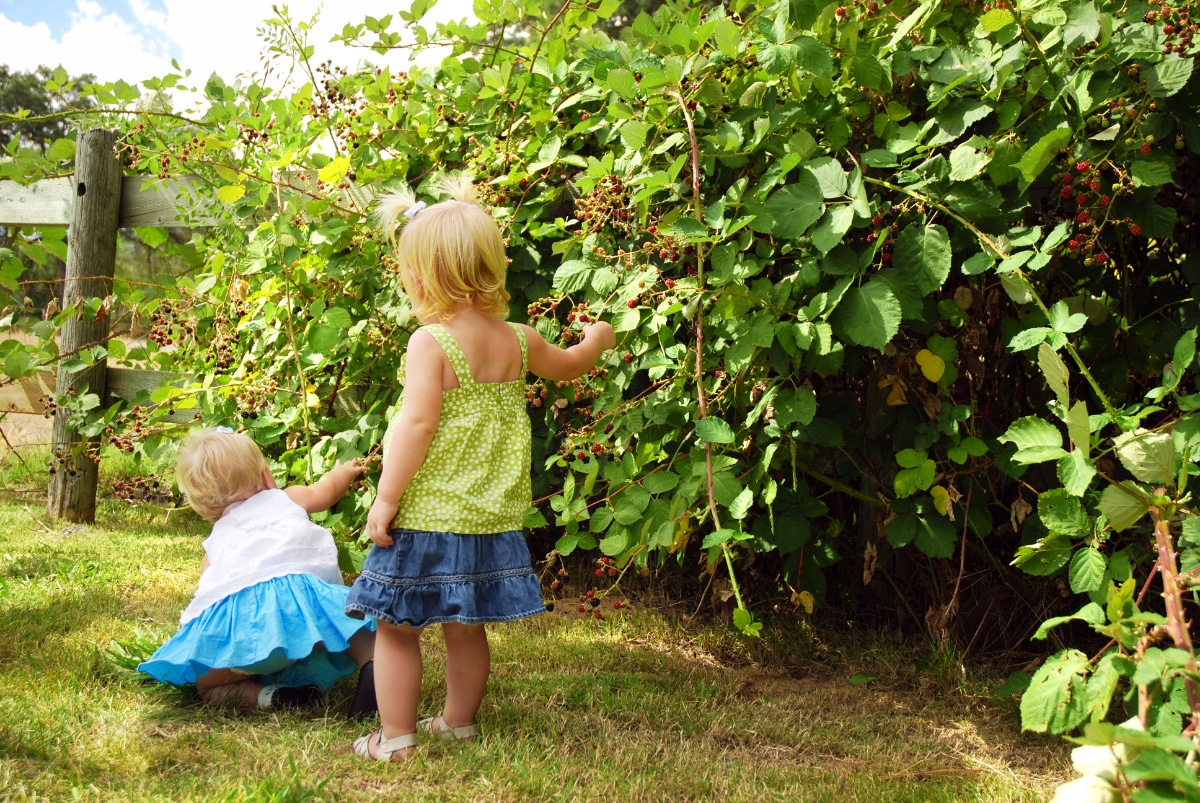
Raspberries and blackberries are extremely easy to grow in your yard. Imagine only having to walk into your garden to enjoy these fresh, delicious fruits. With just a little bit of effort (not too much!), this can be your reality. Fresh berry pies, berries over ice cream, berries in your morning cereal, and newly ripened berries picked straight from the bush and eaten immediately, at your fingertips.
Jump to:
Why Grow Blackberries & Raspberries?
Besides the convenience, growing your own blackberries and raspberries is the only way to ensure you'll have fresh and tasty berries every year. Relying on grocery stores and markets is not great. The berries are often overripe, about to mold, and just generally of poor quality. It's not the berries fault, though. They just have a short shelf life. Once they're picked, they immediately start deteriorating. Raspberries and blackberries must be eaten or prepared within days or at most a week before they rot away. Because of this, many commercial growers pick their berries before they are ripe, so they'll have a longer shelf life. Their flavor isn't given time to develop, and the end result is a bland, juice-less berry. I'm sure we've all had that disappointing berry experience; it's so sad. With berry bushes in your backyard or garden, though, this will no longer be an issue. You can pick them at the peak of their ripeness and enjoy the most delicious, juicy, succulent berries that ever existed.
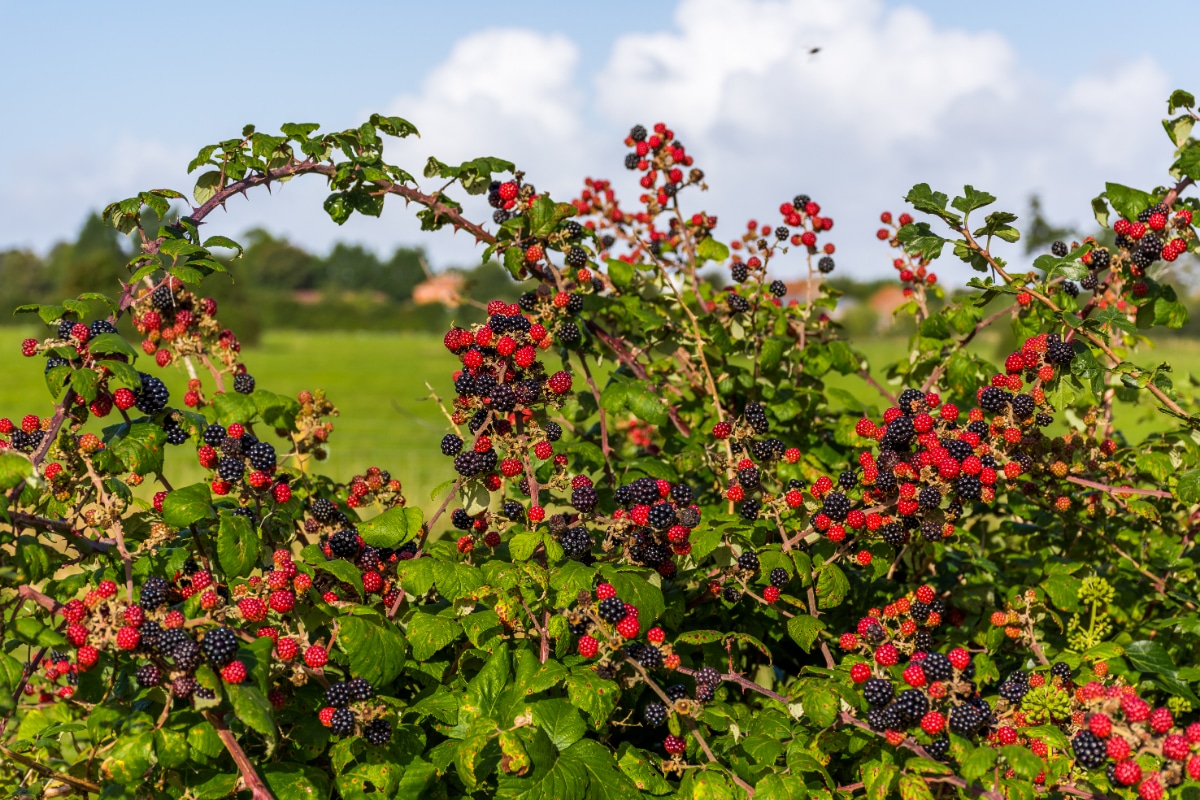
Bees and other pollinators also dearly love blackberries and raspberries. And, birds and wildlife use the bushes as a habitat and for food. Adding them to your backyard will create a mini wildlife haven.
Types of Berries – Wild & Cultivated, Does It Matter?
There are some minor yet significant differences between wild and cultivated blackberry and raspberry bushes. Whether these differences matter to you is really an individual preference. In general, wild berries are smaller than cultivated ones and usually not as sweet. There's a simple reason for this. The cultivated berries, as the term indicates, are bred by humans. And they are specifically created to produce larger and sweeter fruit. Cultivated berries, due to their breeding, are slightly less nutritious than wild versions. The extra sweetness and size come at the cost of fiber and antioxidants.
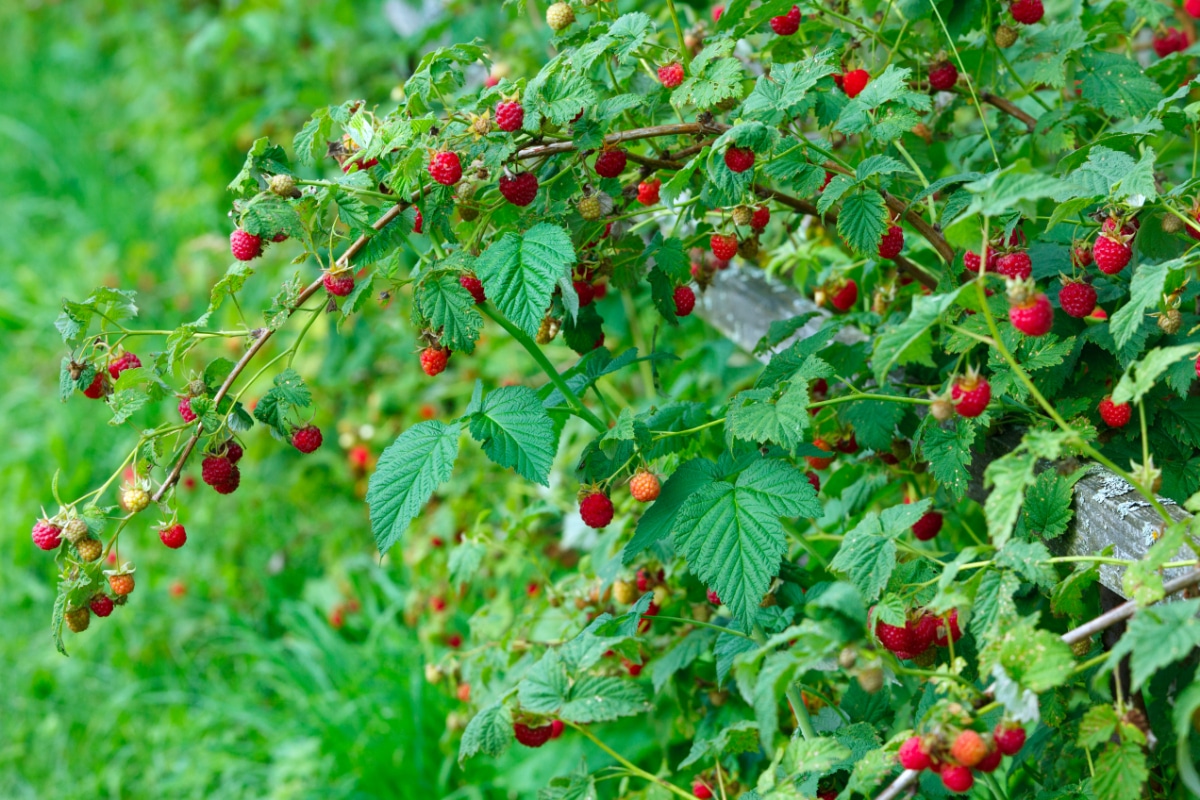
Wild raspberries and blackberries also have many prickly thorns, while the cultivated types either have fewer thorns or none at all. Thornless berry varieties are becoming very popular for obvious reasons. Gone are the days of scarred hands demonstrating how well you fought for that delicious berry! We still hold it as a badge of honor, though, and are proud of the many scratches endured over the years. It was always worth it! Many say there is no reason for thorned berry bushes anymore, but we like them as a natural border – those thorns will prevent people and many animals from traversing through the bramble! It is natural fencing at its finest.
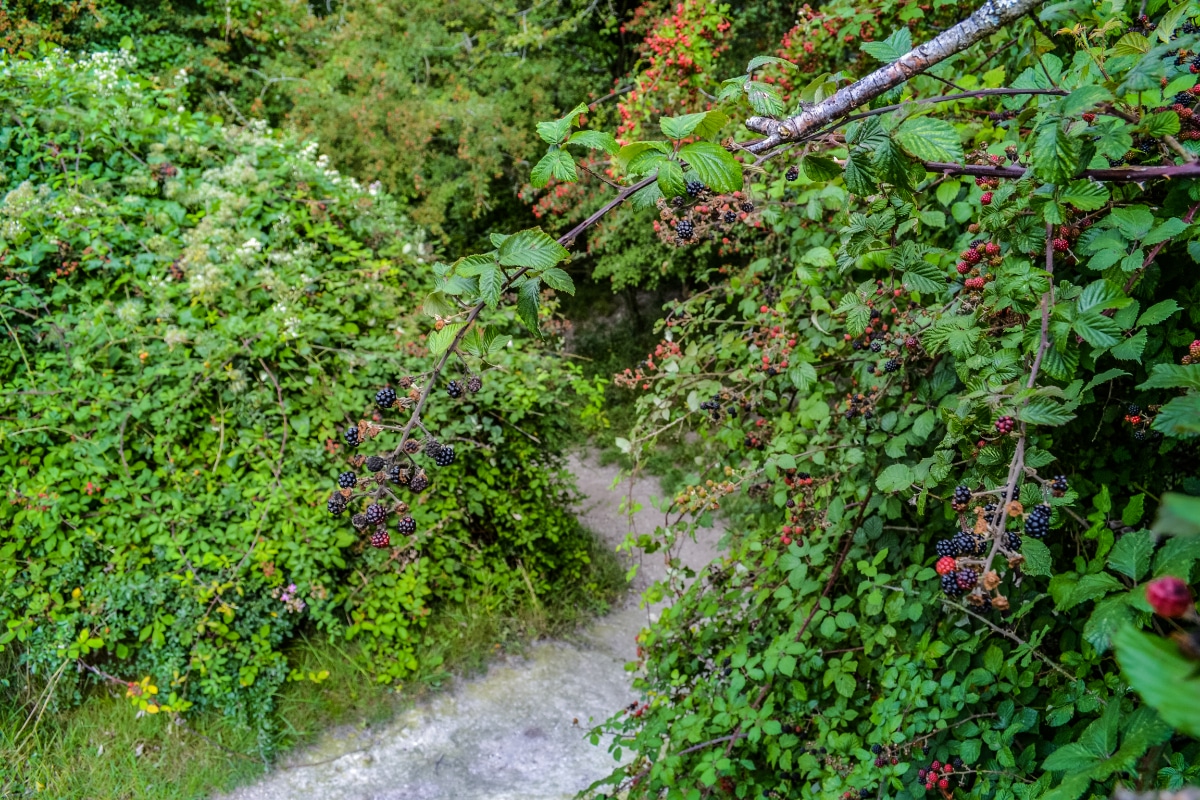
Some people say the wild berries taste better due to their wildness, while others say the cultivated ones are superior. This is mostly a matter of preference, plus there are many types of cultivated and wild varieties, so there isn't just one overarching answer to the question. It depends on the type, really. And, because many commercially sold cultivated varieties are picked before they are actually ripe, their flavor is always inferior.
Getting Started Growing Raspberries & Blackberries
Regardless of whether you're growing wild or cultivated berries, the propagation methods are the same.
First, Growing Basics
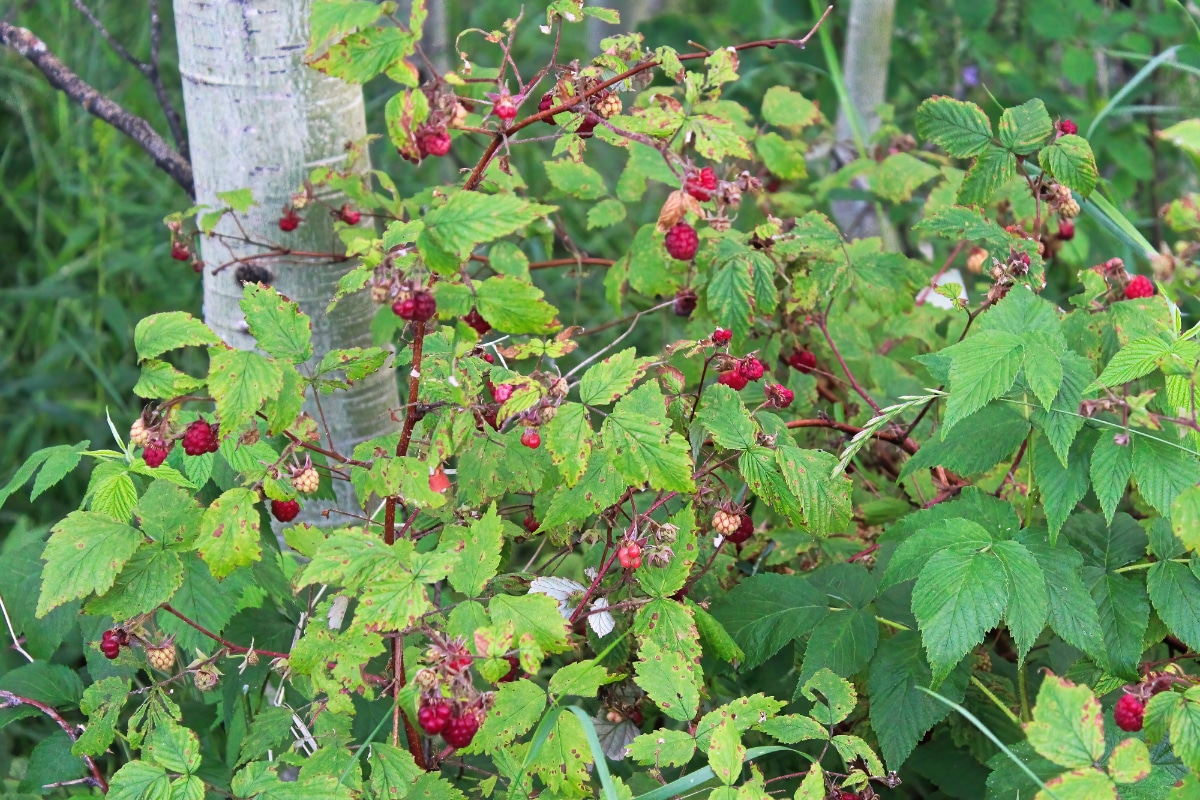
All raspberry and blackberry bushes start from the rootstock. You can grow these berry plants from seed, but we do not recommend it. It takes much longer (2-3 years), and the results are highly variable and often not successful. Starting with rootstock is much more predictable with significantly higher percentages of success. These berry bushes grow through underground root structures, runners, and cane development. Canes are the long branches that come up from the ground and bear the foliage and fruit.
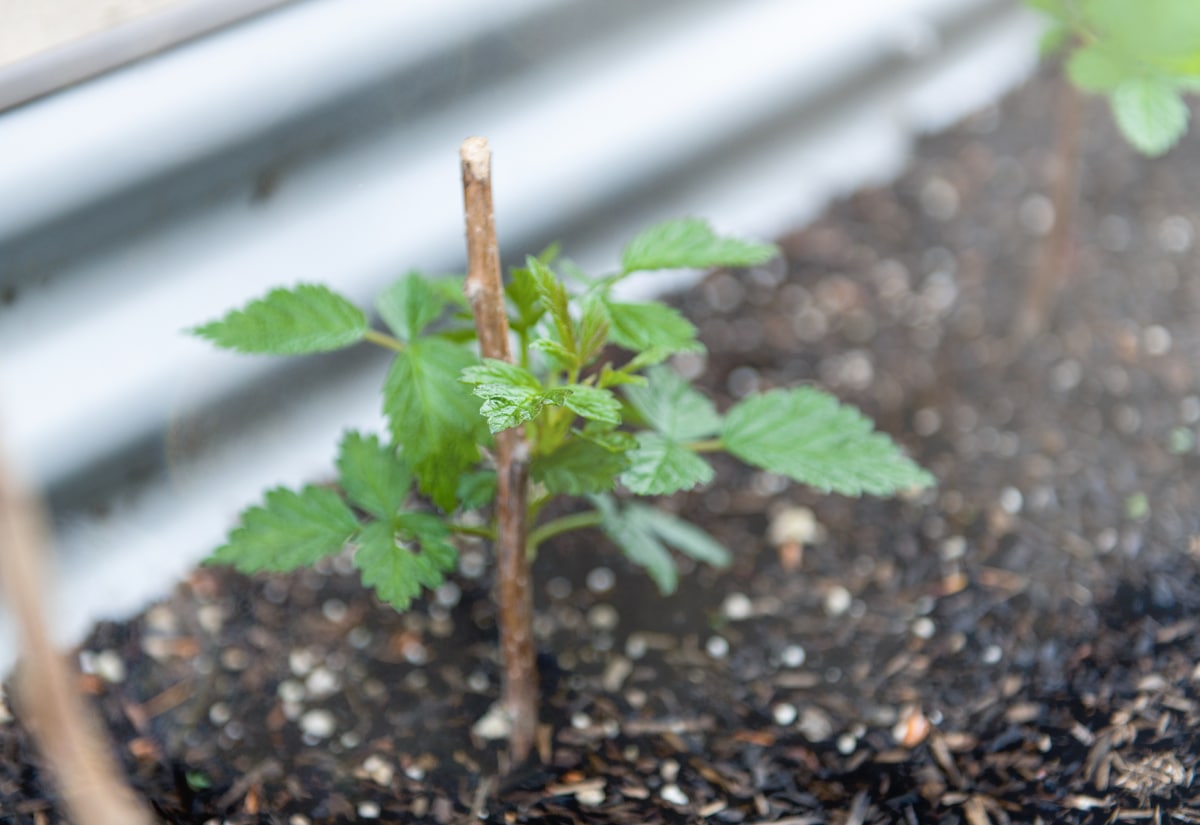
The canes a berry produces the first year are called primocanes. These canes multiply quickly in the spring every year and produce lots of leaves. Second-year canes are termed floricanes, and they will turn brown and look woody. The floricanes produce most of the fruit and flowers. After the canes produce fruit, they die off and should be cut back to the ground. The following year, more will grow.
Raspberries and blackberries are self-fertile; you only need one to produce fruit. Plus, all the bees and natural pollinators will take care of any pollination needs.
Sourcing Root Stock Canes For Planting
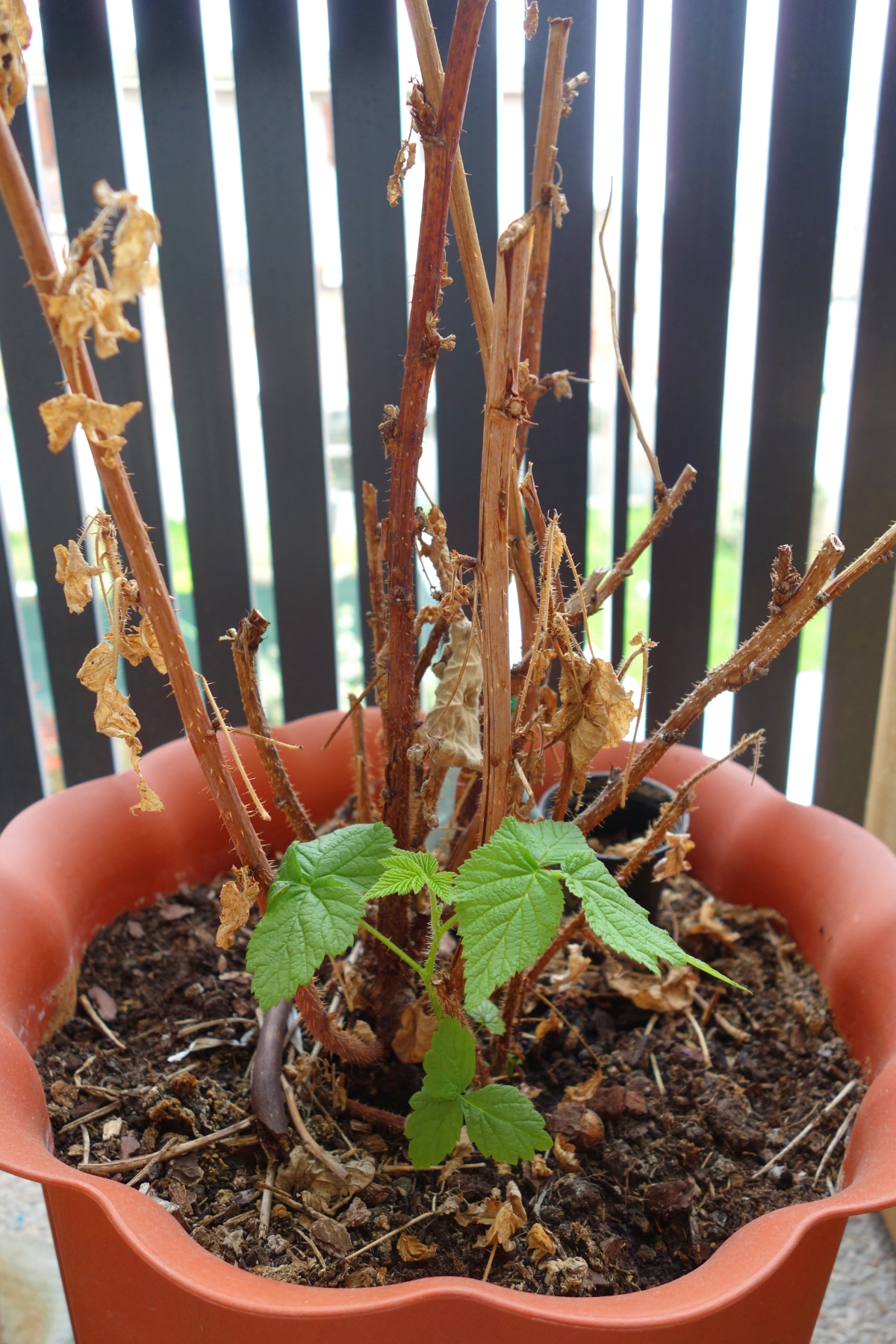
If you plan to grow a cultivated variety, purchase rootstock from a responsible and reputable nursery. Raspberry and blackberry roots improperly grown will not survive planting due to disease or weakness. Unfortunately, this is a common problem. If the rootstock isn't healthy, you will not get healthy, productive plants, and all your time planting them will be a waste.
Summer Bearing vs. Ever-Bearing Raspberries
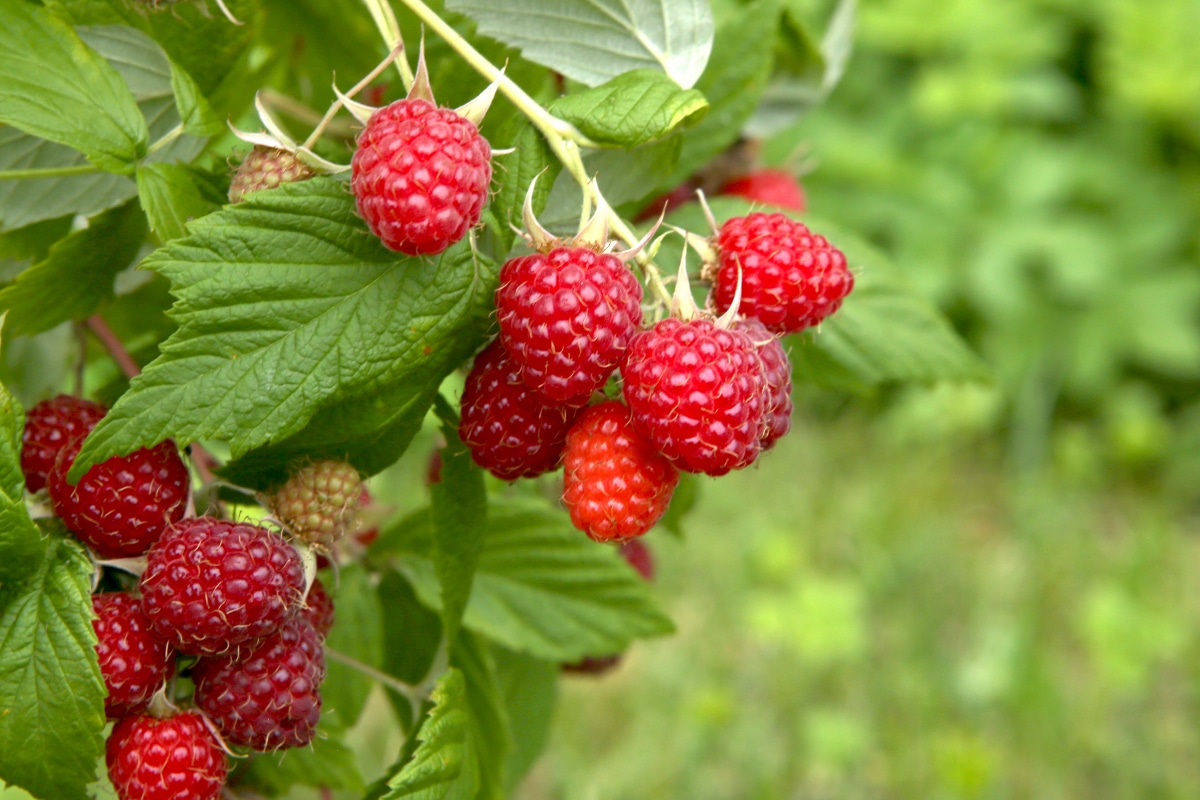
The summer-bearing raspberry canes produce one large crop on their primocanes in early to mid-summer. They continue fruiting for 4-5 weeks, depending on the weather. Ever-bearing raspberry varieties have two crops; one is late summer on their floricanes, the second-year canes. Then, in fall, they produce a smaller harvest on their primocanes.
Some regions aren't ideal for ever-bearing varieties because the season isn't long enough for the second fruiting in the fall to happen. So, having these types of raspberry plants doesn't have any benefit.
Sourcing Root Stock Cane For Propagating Wild Berries
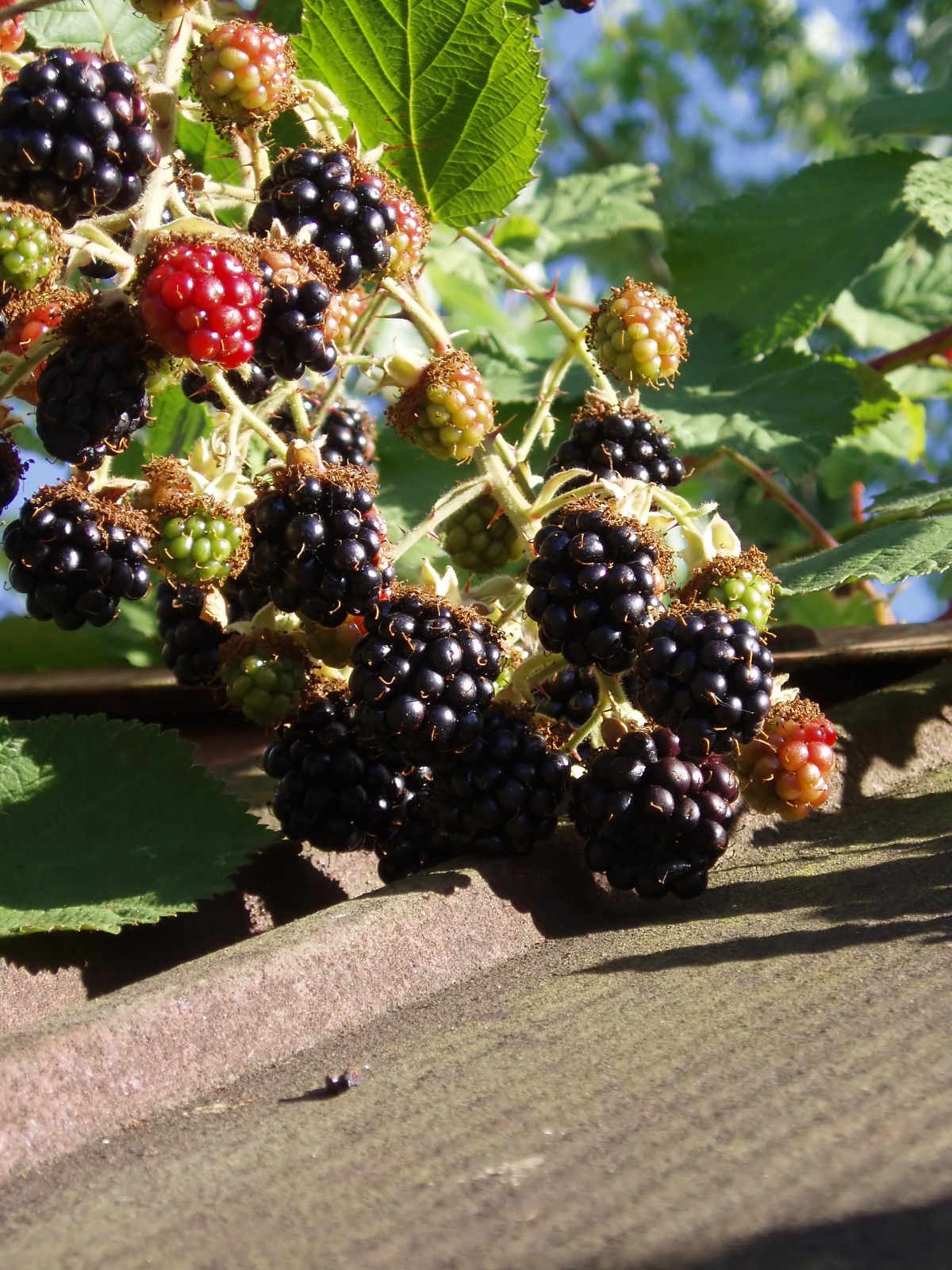
It's easy to do, but we advise caution for one simple reason. Be sure you know what you are collecting and about to plant in your backyard. Just because something is growing wild, it doesn't mean it is natural to your region. In the Pacific Northwest, the Himalayan blackberry grows wild in enormous swathes, taking over roadsides, forests, and fields. It is a cultivated version that escaped and now grows freely everywhere, aggressively pushing out the native species of blackberries and other indigenous plants. Please take the time to identify the wild species before you transplant them to your backyard.
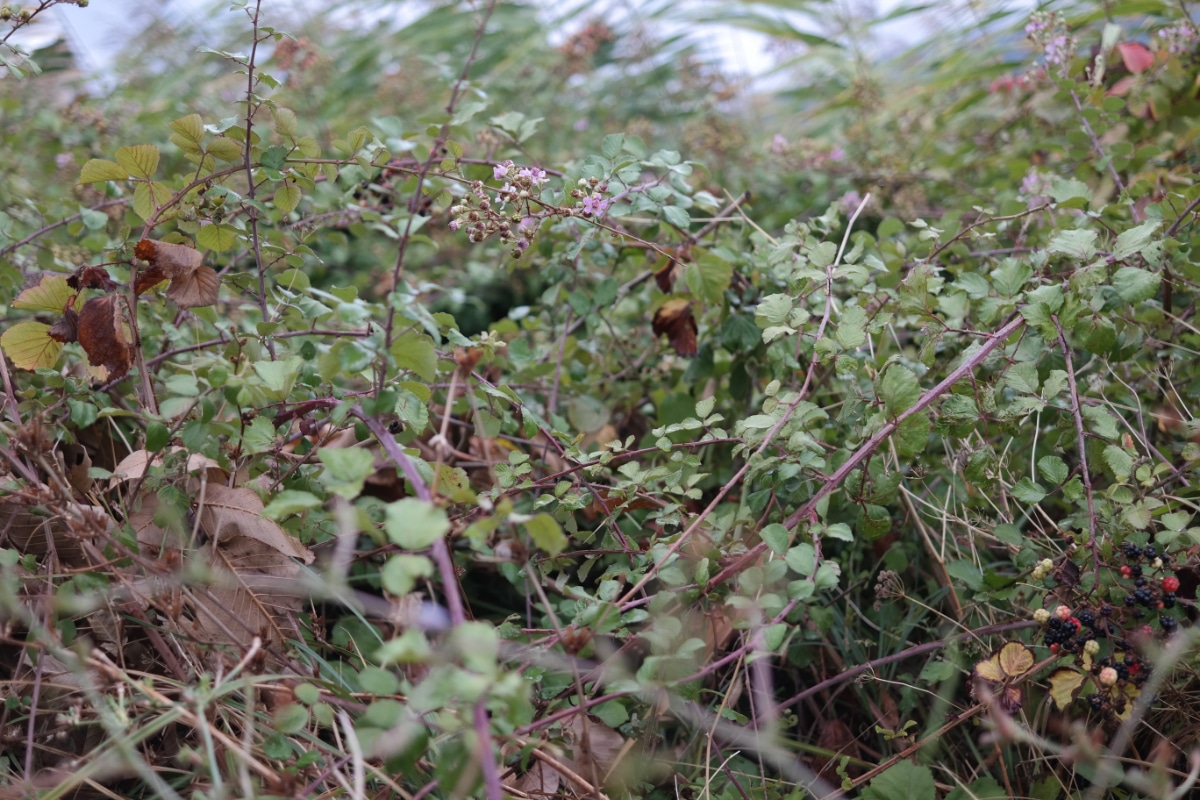
Investigate the wild varieties while they are fruiting to see which are healthy, strong, and good producers. Don't harvest any near roadsides as they are exposed to pollutants. Choose young canes that are green or reddish-brown. Mark the cane of the chosen plant with a tag so you'll know it when you go back later. After the bushes have finished producing berries and the plant is dormant in early or mid-winter, go back to harvest it. Dig up the root of the chosen plant, and get at least a 5" cutting of the root with the cane. The root will actually be much longer than that. Be sure to use clean shears and tools, as you don't want to transmit any diseases to the new rootstock.
Store the roots in a cool, dry location until early spring.
How To Grow Blackberries & Raspberries At Home

Plant raspberries in the spring, as soon as the ground can be worked.
First, choose a large enough location to accommodate berry bushes or be prepared to prune to keep it sequestered to that spot. Both raspberries and blackberries will grow abundantly and spread out over your entire yard if left unattended for a few years. Understand that this new addition to your yard is not a carefree, live and let live plant. On the positive side, they're easy to grow, but also grow so easily they'll take over any space they occupy if allowed to do so. They are called raspberry or blackberry "patches" for a reason!
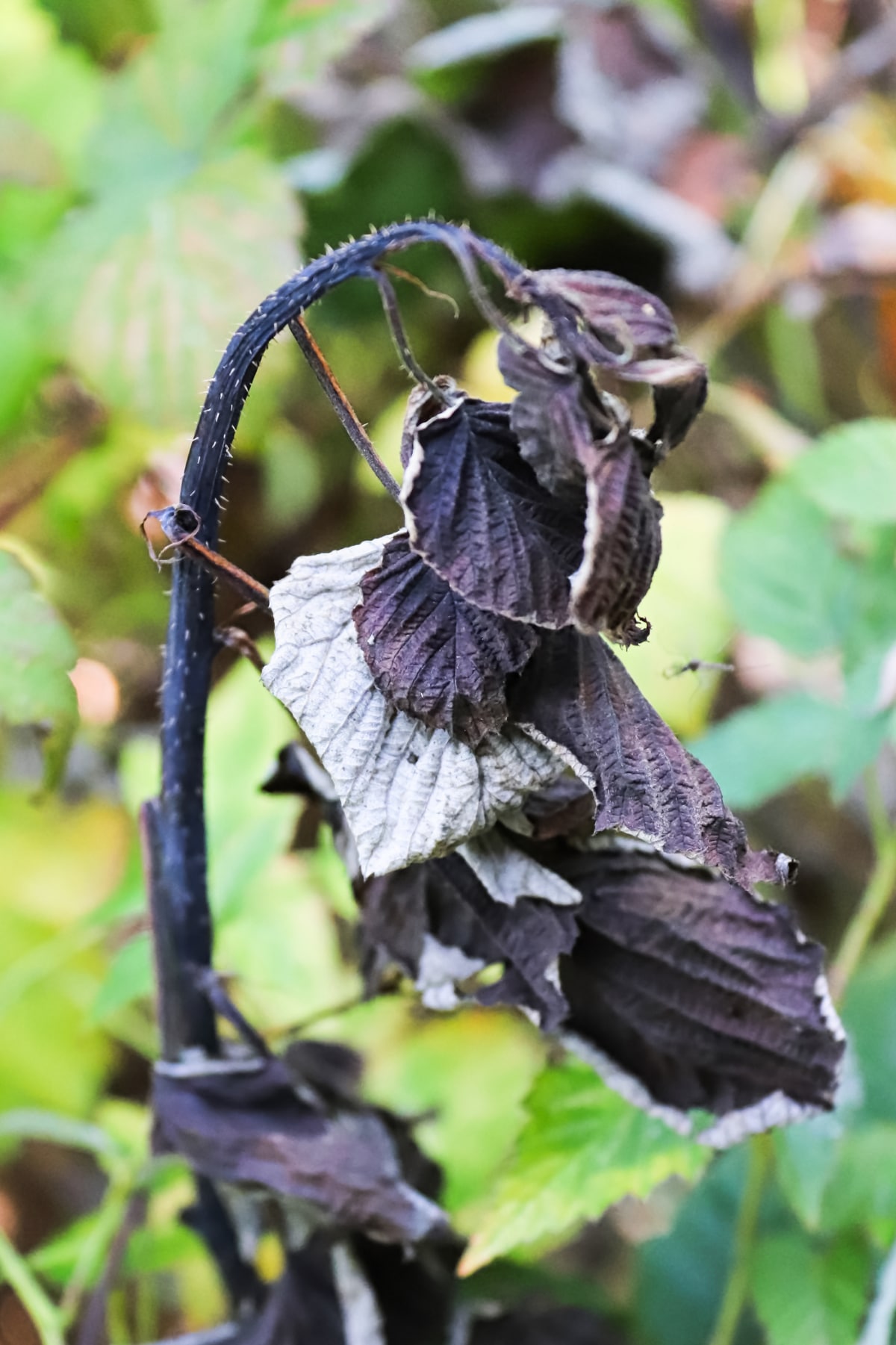
Do not plant eggplants, tomatoes, or potatoes near raspberry or blackberry plants. These vegetables may transmit verticillium wilt or blight to the berries. Also, don't grow these berries near other berry plants of any kind. This prevents the transfer of soil-borne diseases from one patch to another, which is a common problem.
- Choose a spacious location in full sun.
- Be sure there is easy access to water, especially in the first year, as the plants will need regular deep watering as they get established.
- Alongside a fence is a good option, as it will provide a natural support system for the vines. Or plant in a square or patch.
- If you are planting where there is grass, remove it and any weeds, rocks, or other items that may impede growing.
- The ideal soil is rich with organic matter and well-draining. Add compost several weeks before planting to improve the soil. Do not add any fertilizer close to the planting date, or it will burn the roots.
- The plants must have 3-4 feet between them so they can spread out. If you're planting rows, allow at least 1-2 feet between the rows. This space is for you to walk through to harvest and prune. The area must be wide enough for the plants to spread out a bit and for you to walk through. A danger of planting them too closely is that they will become difficult to prune and harvest, and you'll end up missing most of your berries. The ideal spacing varies depending on the type you are planting, so be sure to look that up before beginning.
- Set up a trellis if there is no natural support. Do this before planting, so you don't disturb the roots. The bushes need trellising or they risk falling over or suffering from wind damage.
- Soak the roots for 1 hour before planting, but not any longer than that.
- Dig a hole for each one, based on the size of the root.
- Spread the roots out in the hole and bury them, being extra careful to keep the plant's crown 1-2 inches above the ground. The crown is where the roots and cane meet.
- Gently tamp down the soil around the roots.
- Water the patch thoroughly after planting.
- It will look like you've just successfully planted broken sticks in the ground, but trust us, they'll turn into berry-producing machines soon!
- Don't pick the berries the first year. Let the berry bushes concentrate on growing strong and establishing themselves.
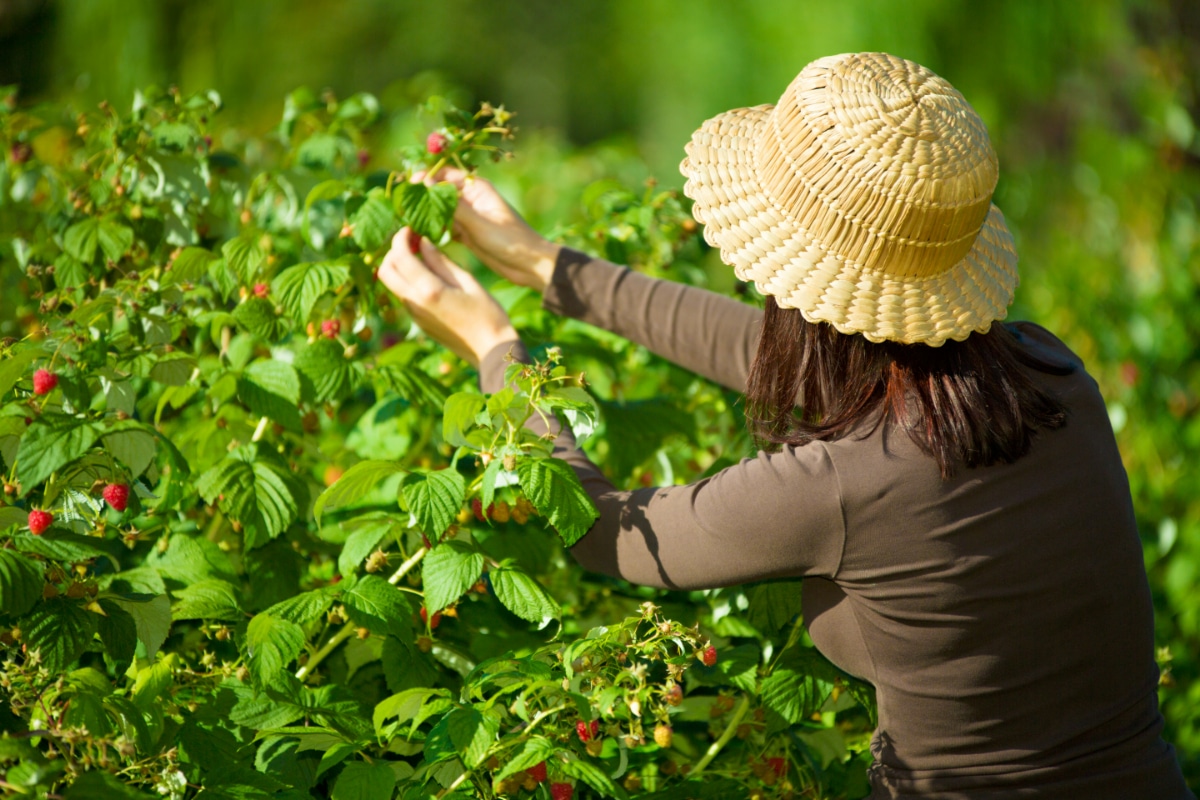
How To Care For Raspberry and Blackberry Bushes
- During the growing season, the berry plants will need 1-2” of water. If you've got rainfall, fantastic! Otherwise, you'll need to water them.
- Keep an eye on the weeds and remove them regularly. The berry bushes have shallow roots, and weeds will easily disturb them.
- Apply mulch inbetween and around the bushes. This will help keep the weeds in check, and also helps the soil retain moisture so you don't have to water as often. Don't let the mulch touch the base of the canes; there should always be a 2-3” berth around the canes so the plants can breathe. When mulch is packed up close to the plants, there is less air flow and that brings on diseases.
- In the fall, cut back any canes that have spread where you don't want them. For raspberries, this includes the canes sprouting from the roots. Blackberries don't do this, but they have another ingenious way of spreading by arching the tip of their canes down to the soil and taking root there, essentially forming an arch. We highly recommend cutting back any canes that have done this rooting trick and any that have spread more than 12”. When they spread too much, they start becoming difficult to control.
- Add a dressing of 10-10-10 fertilizer in the spring every year. Never fertilize in the fall.
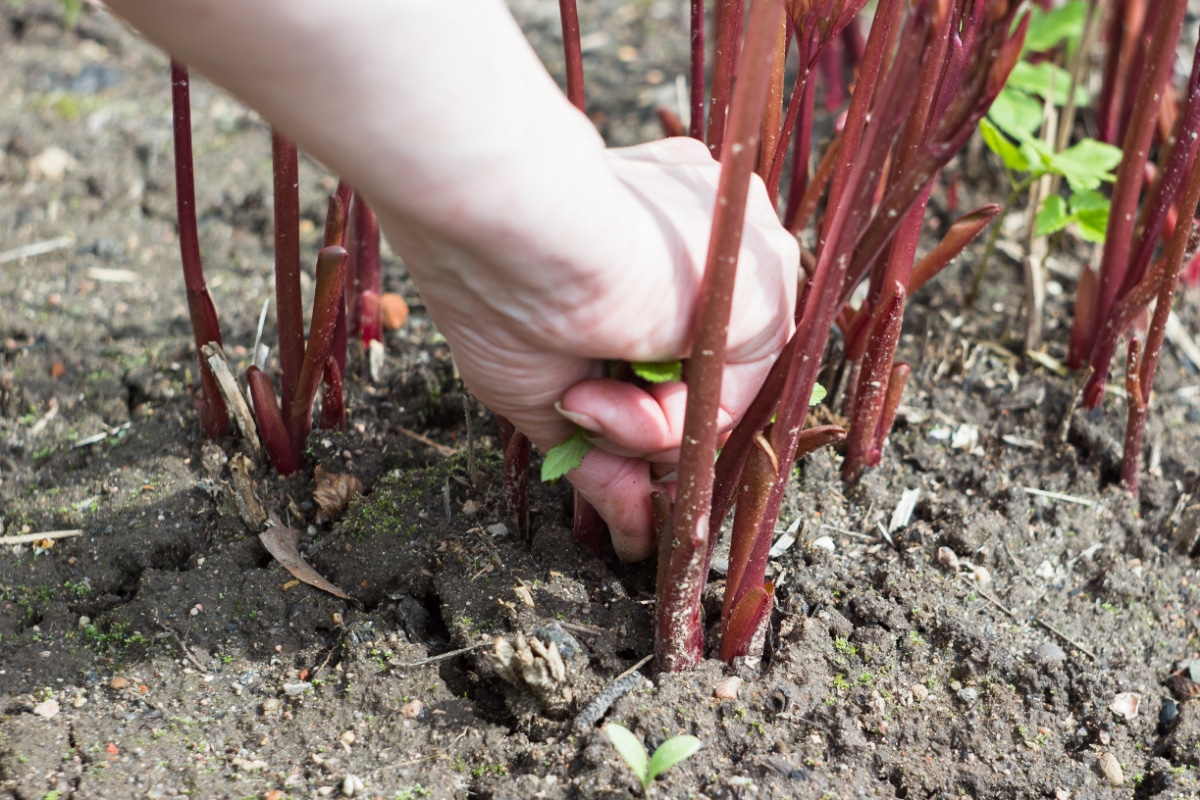
Pruning – Don't Skip It!
As you've probably noticed throughout this guide, there are several mentions of the possibility of bushes spreading and getting out of control. Regular pruning is essential to keep the plants in check so your yard doesn't turn into one big blackberry patch. Pruning also creates healthier and more robust yields. Unpruned bushes grow smaller berries because all the canes are competing for resources and drawing away energy from berry production to grow more canes.
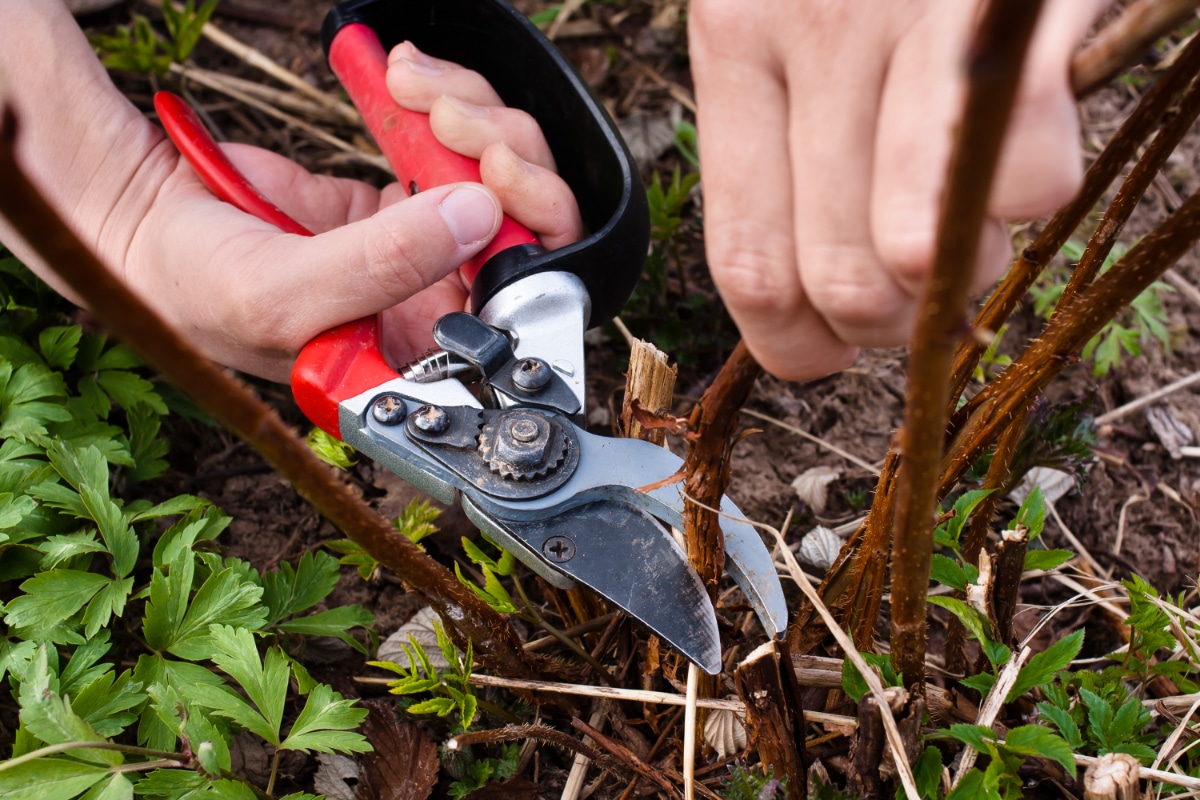
Make sure you understand the difference between primocanes and floricanes. It's not difficult, we promise. The primocanes are green, while the floricanes are brown or reddish. Dead canes are dark brown or black and brittle.
If you've got a thorny berry, don't forget the gloves! And, always use sharp, clean pruning shears.
Pruning Summer Bearing Raspberries
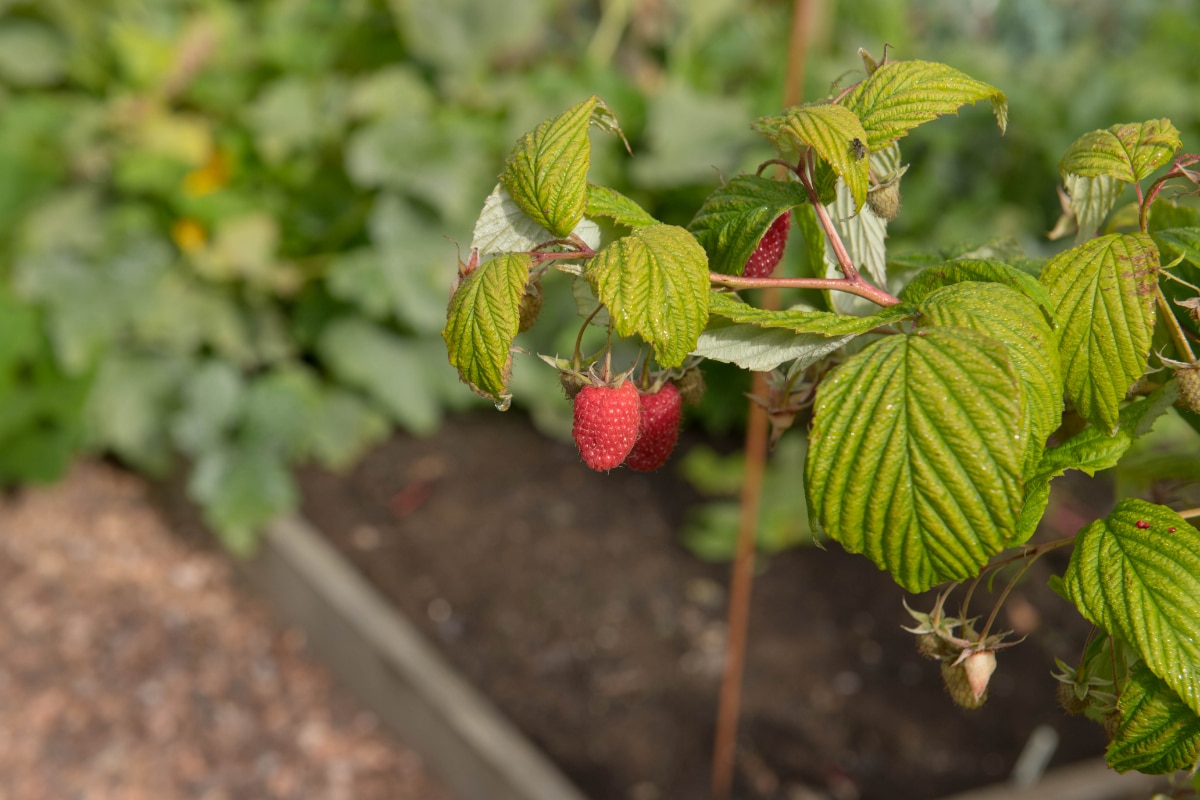
In fall, after the last harvest, cut all the canes that produced berries down to the ground level. Also, cut off any dead or injured canes. Remove them to the compost or brush pile. Cutting the canes regularly gives new canes room to grow, keeps the plant in check, and reduces the possibility of disease.
Thin the primocanes to 4-5 strong canes per foot.
Pruning Ever-Bearing Raspberries
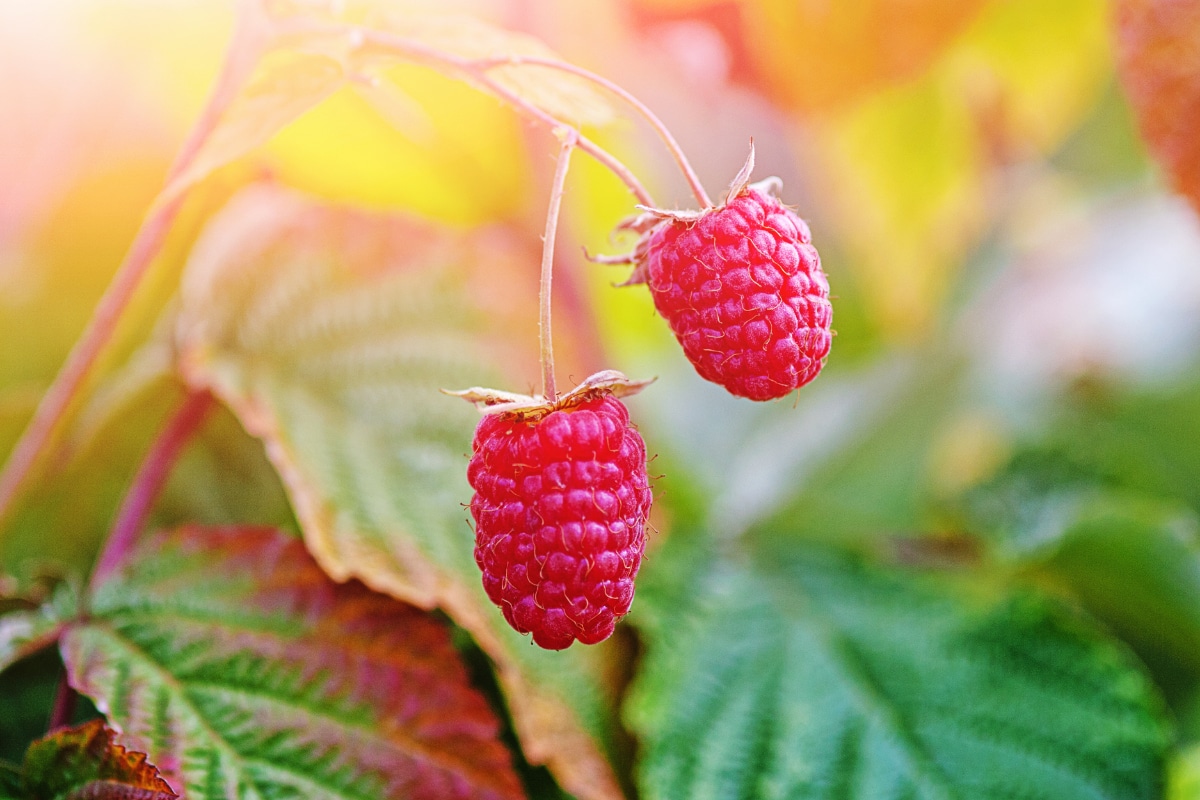
If you want both harvests, summer and fall, follow the instructions above for summer bearing varieties. Remove all dead canes after the last harvest. Then, in spring, cut back the primocanes to where green growth appears.
To only get a single fall crop, which is often recommended because it will be bigger than the two harvests combined, cut back all the canes to the ground in late winter.
Pruning Blackberries

Prune in late-fall to late-winter. Wait until the old fruiting floricanes have died back significantly before pruning. This allows time for the nutrients in those canes to move back down to the roots. Cut back all the canes that bore fruit and the dead canes to ground level. Trim the primocanes back, so they are a reasonable height. Many people cut back to the top of their trellis or just to a reachable height, around 4-5 feet.
Harvesting
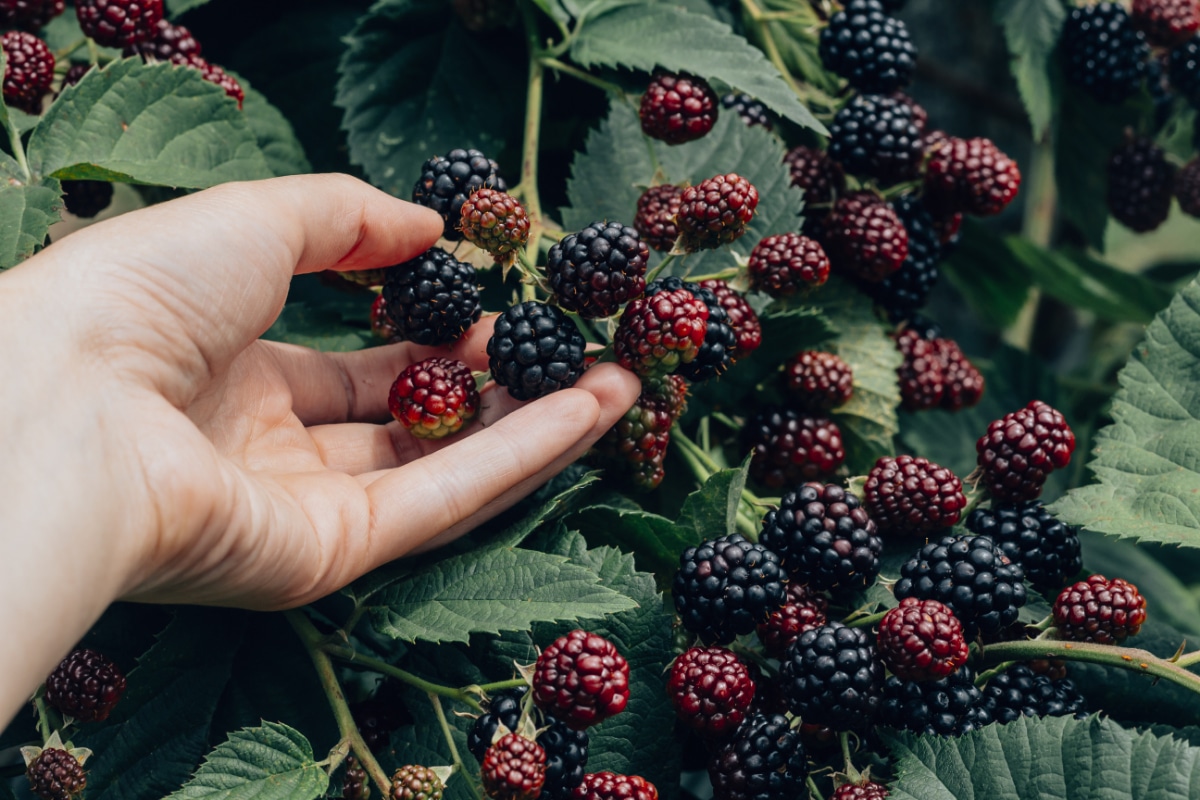
For all the berry types, once they begin to ripen, you must pick them often. The harvest season isn't very long, and you want to get the most out of it. Also, if you wait, they'll rot on the bush, or all the birds and insects will steal them before you get a chance to enjoy any. Harvest every couple of days, or more often, depending on how many berry bushes you have.
Raspberries and blackberries are best picked in the morning or early evening when the temperatures are cool. Berries will not ripen further after being picked, so only pick the ripe ones! Also, never wash berries until you plan on eating them. The extra moisture will break down the berries quickly.
Blackberries

Ripe blackberries are plump, deep black, and come freely off the plant when pulled. If you have to yank on them, they are not fully mature yet. Unlike raspberries, the central plug in the center of the berry comes off with the fruit. This is actually a great way to differentiate between types.
Raspberries
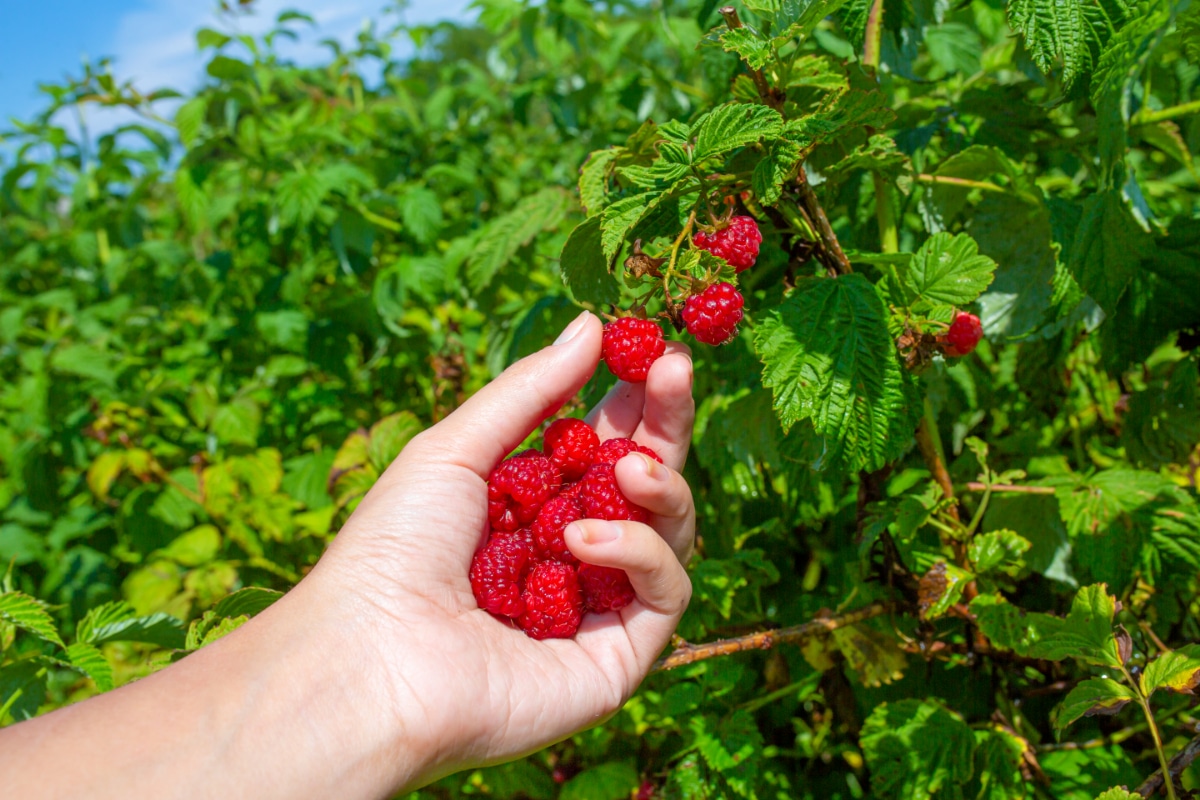
Ripe fruits come easily off the plant when pulled and leave behind the center core. If you have to pull hard, they aren't ripe yet.
Popular Cultivated Blackberries

Navaho or Arapaho – Thornless with lots of sweet, dark fruit. Excellent winter hardiness, upright growth that is easy to train.
Asterina – Strong classic thornless blackberry with very large, plump berries that are super sweet.
Triple Crown – Robust, late-maturing thornless type with plenty of big, juicy sweet berries.
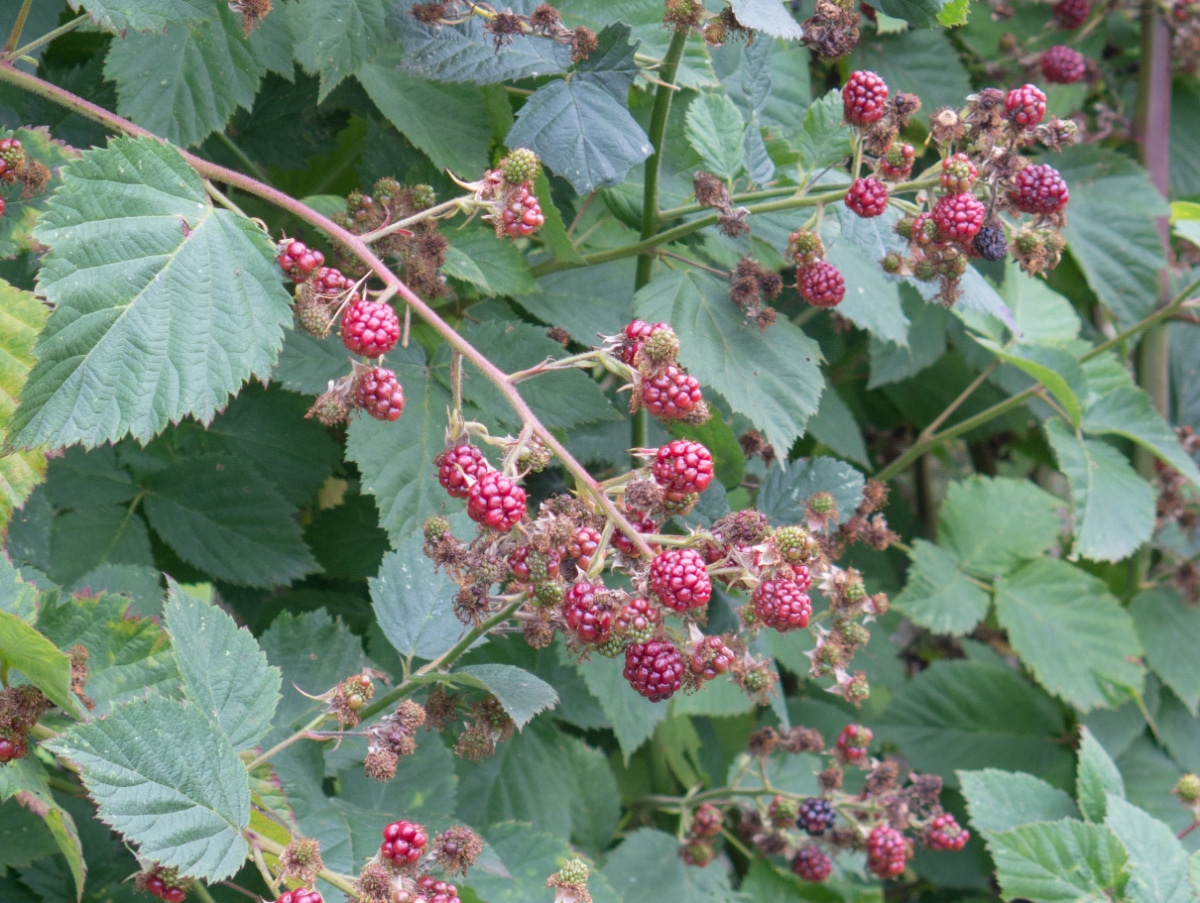
Black Satin – Early-maturing, thornless with long, oblong, shiny berries.
Polarberry – An odd variety with pure white berries. The coloring agent is missing, so the fruit doesn't turn black. It still tastes just like a blackberry, though! Less attractive to birds.
Reuben – A thorned autumn-bearing bush with large and glossy fruits.
Rosborough – Thorny bush that produces in early summer with sweet, firm berries. Ideal for hot, dry climates.
Popular Cultivated Raspberries
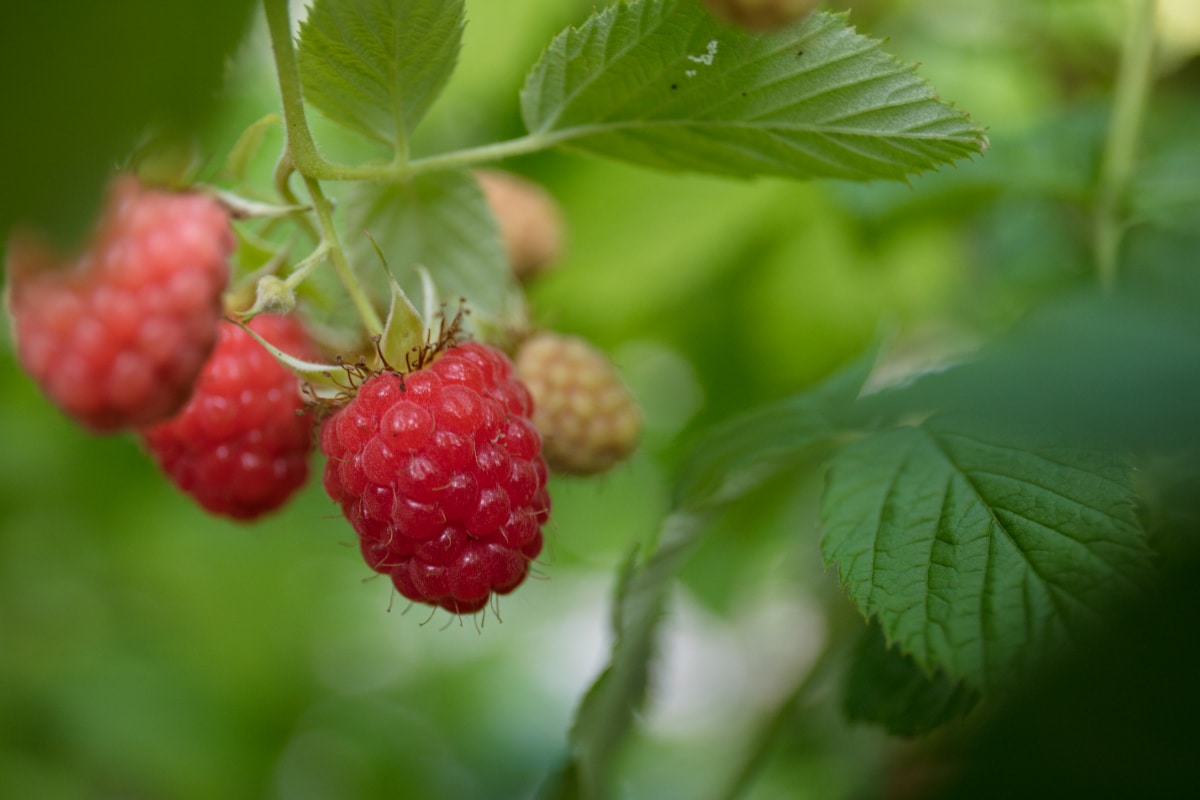
Heritage – Ever-bearing variety that produces large, extra-sweet red berries on tall canes.
Nova – Hardy for northern climates, with medium-sized red berries that are slightly tart. Fewer thorns than most.
Boyne – Medium-sized deep-red medium berries that are tender and sweet, summer bearing.
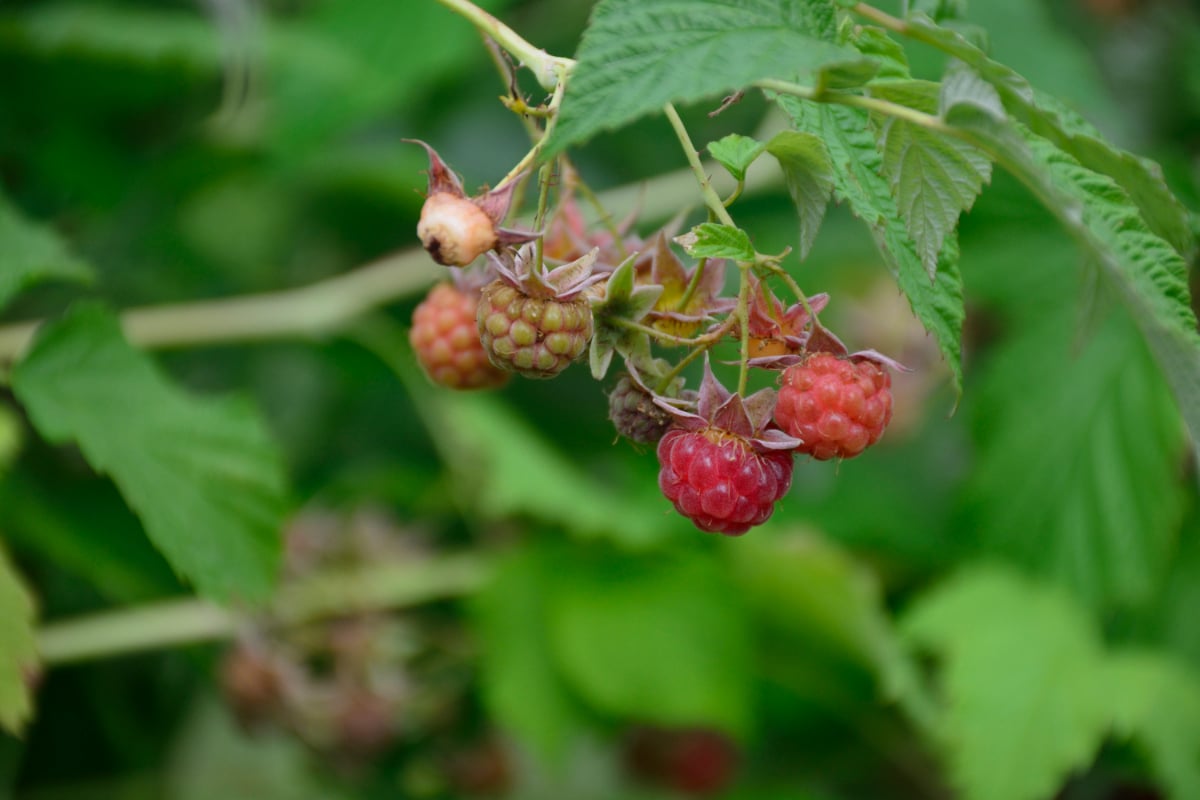
Festival – Almost thornless with medium bright red berries. Not as vigorous as other types. Summer bearing.
Raspberry Shortcake – A dwarf variety perfect for small spaces and container growing. Summer bearing.
Royalty – A cross between red and black raspberries, this purple raspberry grows vigorously and gives a vast harvest.
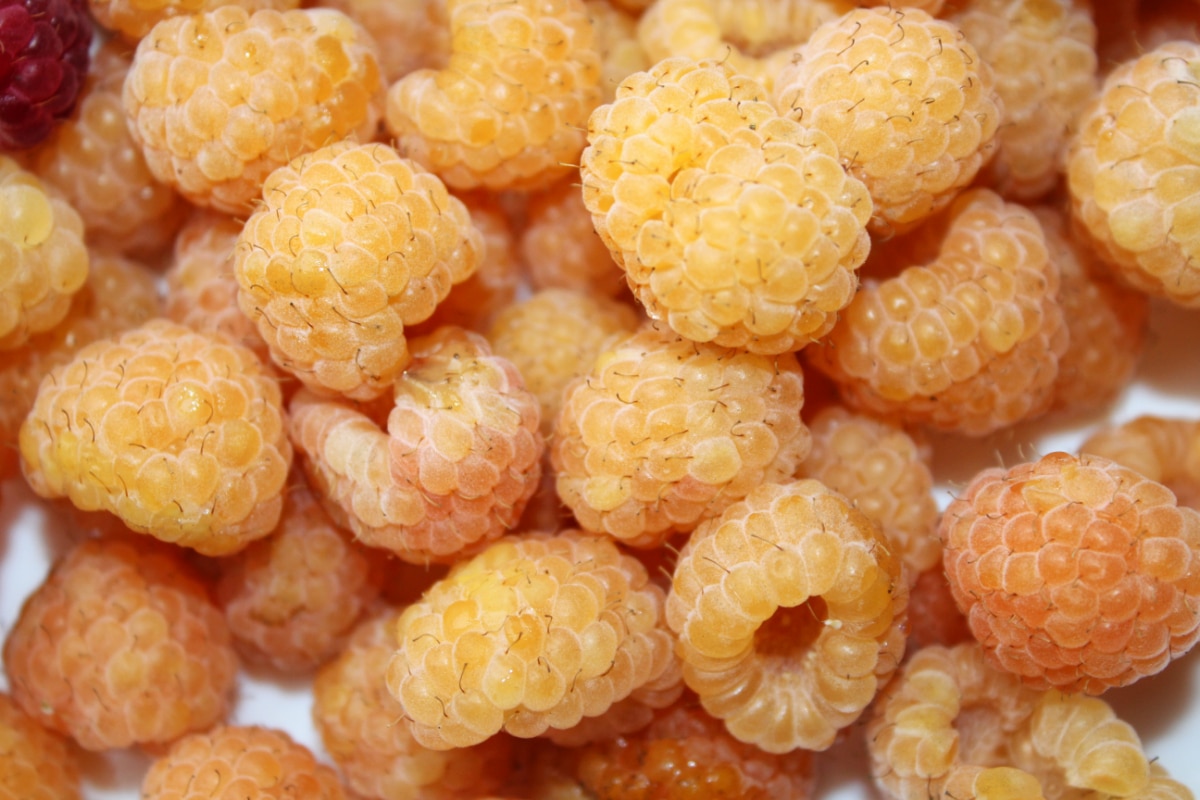
Fall Gold – An ever-bearing type with deep golden, sweet fruit.
Jewel – A black raspberry that produces medium-sized sweet berries with fewer seeds. Ever-bearing.
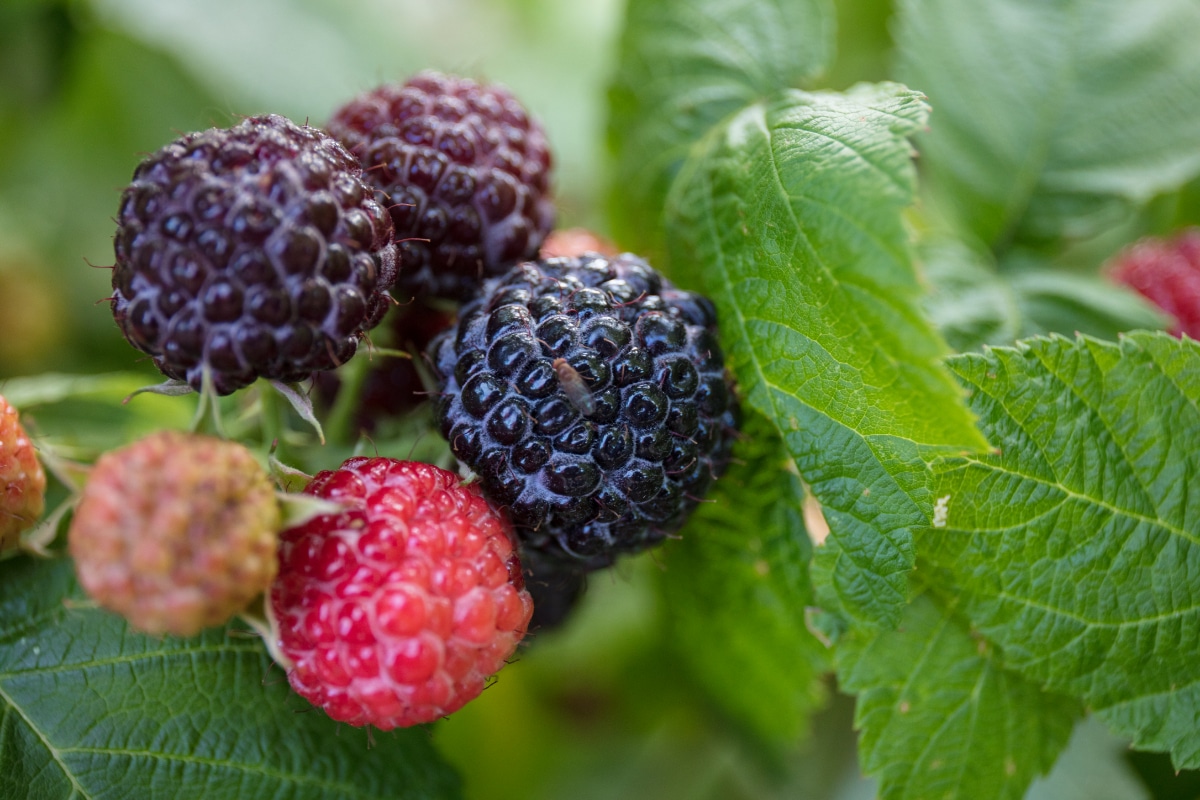

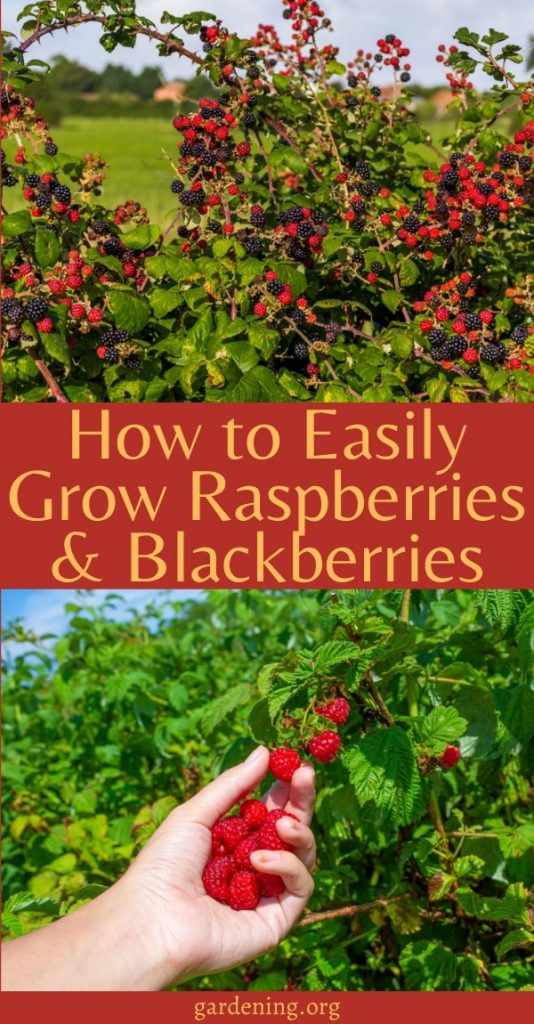
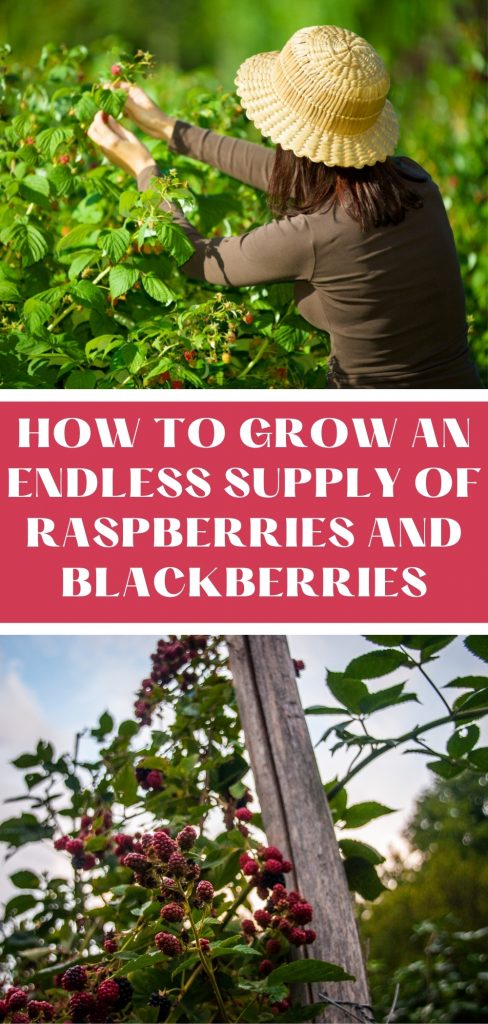
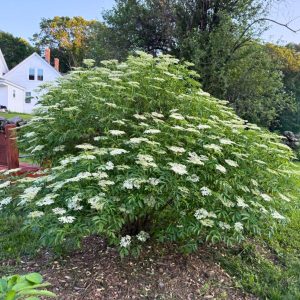
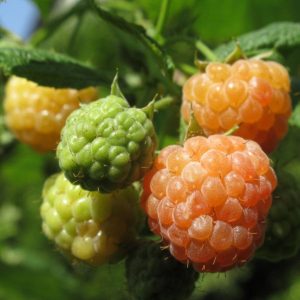
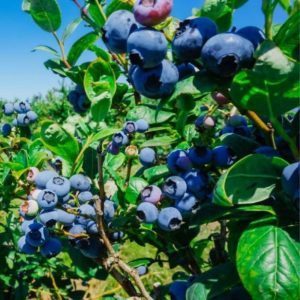

Dr. Hamli Biha
I never have any interest to plant berries not until these articles. Sounds very interesting and cultivated my interest to plant them. unfortunately, I have no idea of the source to get the seeds or seedlings or even vegetative plants.
Lanie
You can look in Loew and Home Depot for berry plants. They also carry vegetable plants and seeds.
Hope that helps.
Traci
Great article … I have two black berries bushes young is it normal for leave to turn yellow than brown and fall off
Paulina
Very good article! I couldn’t find more accurate info about how to prune my blackberry bush , this is new for me. Thanks
Patty McNiven
How would I get rid of grass, like Johnson grass through out my established plants that are 5 or 6 year old without killing my raspberry plants? I can see in some sections where the grass is choking out the plants.
Mary Ward
Your two best options would be to either pull it out by hand or to try and mulch it heavily to suppress it and kill it. A layer of thick cardboard topped with wood chips is one good option.
Patty McNiven
I live in central Wyoming. I usually cut down my canes because they don't survive the cold winters.
Michael N.
After growing many raspberry varieties for years, I've determined the clear winner to be Joan J. It's the only variety I grow now. I cut the vines to the ground in the middle of February and have a massive late-summer/fall harvest.
Pruning timing is very important. Carbohydrates move from plant’s canes and leaves into the crown in early winter, and from the crown to the buds in early spring. If canes are cut before all the carbohydrates reach the crown, the new canes may not be as vigorous the following year. Canes can also be cut too late, after carbohydrates have move to the buds. From December to February, most carbohydrates are in the crown, so this is the ideal time to cut canes.
S
Where do you live, or what zone?